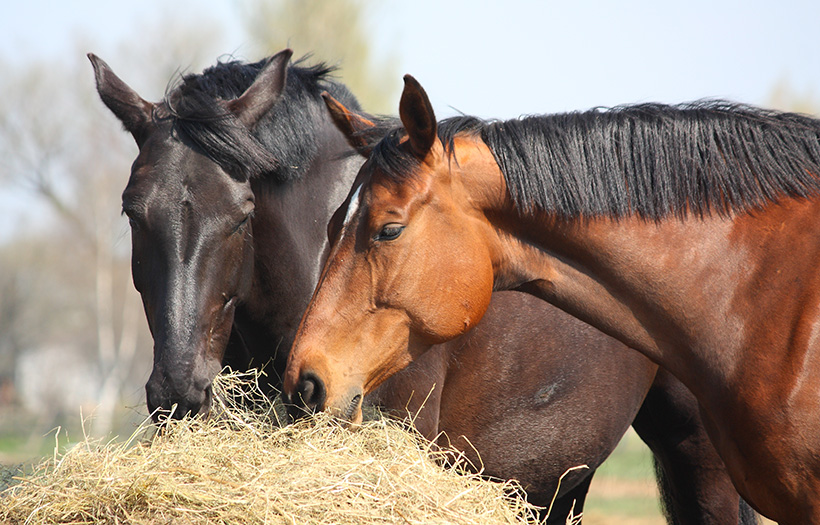Feeding Fiber to Horses

Do you know the fiber level in your current feeding program? If you don’t, you are not alone. Few horse owners can answer that question, and even fewer understand why it might be important or where fiber comes from. The first and foremost source of fiber in a horses’ diet is their roughage, or hay, source. Secondary to that is what is present in any supplemental grain sources.
First of all, let’s define what fiber is:
- Fiber is a measure of the plant cell wall, or the structural portions that give the plant support.
- Main components of fiber are the digestible cellulose and hemicellulose, and the indigestible lignin.
- As a crop of hay matures, the lignin content increases and the cellulose and hemicellulose decrease.
Here’s what happens as a horse consumes roughage:
- Some quick digestion occurs in the stomach and small intestine, allowing starches and sugars to get digested as the forages pass through this portion of the digestive system.
- The fiber begins to get digested as the feed passes into the hindgut, or the cecum and colon.
- Fiber is digested well here is because of the presence of billions of microorganisms (bugs) whose sole function is to digest fiber.
- These microorganisms break down fibrous feeds into short chain volatile fatty acids, which are a source of energy for the horse.
Here is why it becomes important to feed a high-quality, early-growth-stage roughage. As a plant matures, the lignin portion increases, reducing the energy available from that roughage. Add that to the other benefits of high-quality roughage for horses, namely the greater availability of other nutrients, and it is easy to see where spending a little more money for better hay is better in the long run for your horse.
So what does it all mean for your horse? A horse consuming 1-1.5% of it’s body weight per day in quality roughage sources will meet its fiber needs.
